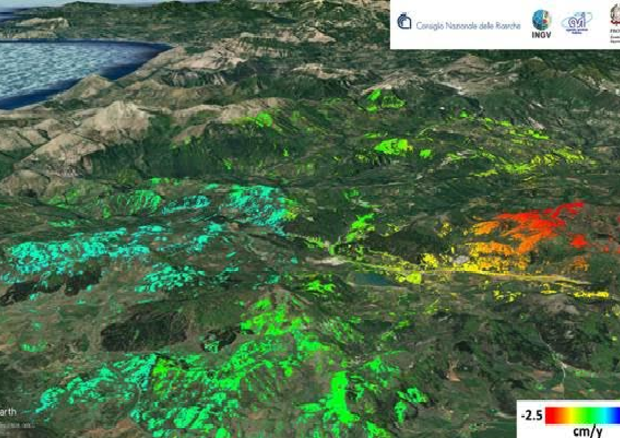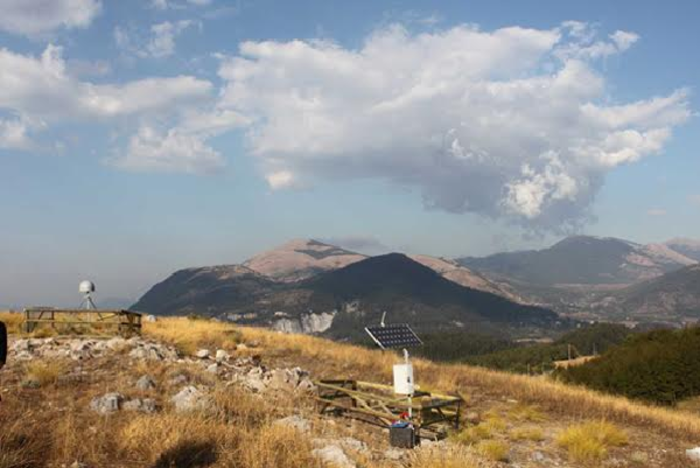Terremoti, registrati i movimenti silenziosi delle faglie / Earthquakes, recorded the silent movements of the faults.
Terremoti, registrati i movimenti silenziosi delle faglie. / Earthquakes, recorded the silent movements of the faults.
Segnalato dal Dott. Giuseppe Cotellessa / Reported by Dr. Joseph Cotellessa

Per la prima volta in Italia sono stati individuati i movimenti 'silenziosi' delle faglie, quelli che avvengono molto lentamente e senza provocare terremoti: sono stati registrati dai satelliti radar e Gps nella zona del Pollino e permettono di spiegare perché, rispetto al resto dell'Appennino, in quest'area i terremoti di magnitudo elevata sono meno frequenti. La ricerca, pubblicata sulla rivista Scientific Reports, è stata condotta da Istituto Nazionale di Geofisica e Vulcanologia (Ingv) e Istituto per il rilevamento elettromagnetico dell'ambiente del Consiglio Nazionale delle Ricerche (Irea-Cnr) in collaborazione con il Dipartimento di Protezione Civile.

I dati sono stati raccolti grazie ai satelliti radar della costellazione Cosmo-SkyMed dell'Agenzia Spaziale Italiana (Asi) e dalle stazioni Gps della rete Ring dell'Ingv. I dati hanno permesso di analizzare la lunga sequenza sismica avvenuta fra il 2010 e il 2014 nella zona del Pollino, compresa tra Calabria e Basilicata.
E' emerso che sono avvenuti contemporaneamente due tipi diversi di movimenti delle faglie: da un lato le fratture della crosta terrestre che accadono in pochi secondi e scatenano i terremoti; dall'altro i movimenti lenti, che richiedono settimane o mesi e che non generano terremoti, come mostra il seguente video.
E' emerso che sono avvenuti contemporaneamente due tipi diversi di movimenti delle faglie: da un lato le fratture della crosta terrestre che accadono in pochi secondi e scatenano i terremoti; dall'altro i movimenti lenti, che richiedono settimane o mesi e che non generano terremoti, come mostra il seguente video.
Anche la foto in apertura mostra la mappa della velocità di deformazione del suolo nella zona del Pollino tra il 2012 e il 2014. I punti colorati rappresentano le misure radar effettuate dal satellite. Le zone in verde sono ferme; quelle in rosso si allontanano dal satellite con una velocità media di circa 2.5 cm all’anno; le zone in azzurro si avvicinano al satellite con velocità media di circa 1.5 cm all’anno.
Per il coordinatore della ricerca, Nicola D'Agostino, dell'Ingv, questo movimento lento delle faglie contribuisce ''al rilascio di una parte dell'energia che verrebbe altrimenti liberata dai terremoti''. Si spiegherebbe allora perché, ha aggiunto, "rispetto al resto dell'Appennino, i terremoti di magnitudo più elevata sono relativamente meno frequenti nell'area del Pollino".
ENGLISH
It is showed that have occurred simultaneously two different types of faults movements: on the one hand fractures of the earth's crust that happen in a few seconds and trigger earthquakes; other slow movements, which require weeks or months and that do not generate earthquakes, as shown in the following video.
Even The photo shows the opening map of the deformation of the ground speed in the Pollino area between 2012 and 2014. The colored dots represent the radar measurements made by the satellite. The areas in green are at a standstill; those in red running from the satellite with an average speed of about 2.5 cm per year; the zones in blue are approaching to the satellite with an average speed of about 1.5 cm per year.
For the research coordinator, Nicola D'Agostino, INGV, this slow movement of faults contributing '' to release some of the energy that would otherwise be released by earthquakes ''. It would explain why, he added, "than the rest of the Apennines, the most high-magnitude earthquakes are relatively less frequent in the Pollino."
Da:



Commenti
Posta un commento